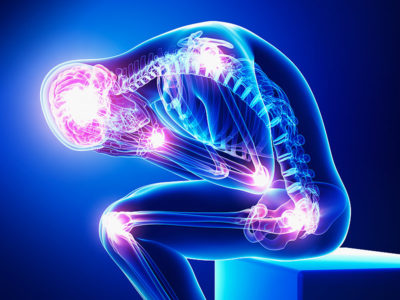
When you experience great pain on a day-to-day basis it can be very hard to maintain a healthy lifestyle. Chronic pain can lead to inactivity, which in turn can cause injury due to weakened joints and tissues. Overuse of opioids to treat chronic pain has become an increasing issue in regards to public health, the Centers for Disease Control and Prevention (CDC) released guidelines that recommend non-drug approaches such as physical therapy over long-term or high-dosage use of addictive prescription painkillers.
“Non-pharmacologic therapy and non-opioid pharmacologic therapy are preferred for chronic pain,” the guidelines state (“CDC Guideline for Prescribing Opioids for Chronic Pain – United States, 2016” – March 15, 2016). “Clinicians should consider opioid therapy only if expected benefits for both pain and function are anticipated to outweigh risks to the patient. If opioids are used, they should be combined with non-pharmacologic therapy and non-opioid pharmacologic therapy, as appropriate.”
There are certain conditions – including cancer treatment, palliative care, and end-of-life care – where opioid prescription for chronic pain may be appropriate, however their are also numerous cases where the CDC has found that opioid use could be significantly reduced or avoided altogether. In these cases physical therapy is strongly recommended to help patients gain strength, which can lead to a healthier lifestyle and gradually alleviate some of the pain these patients feel day-to-day.
Patients with extreme forms of chronic pain are often unable to tolerate even the lightest touch, even in areas that are not directly associated with the primary sensations of pain. A patient with hypersensitivity to touch often requires gentle, hands-on treatment to determine levels of sensitivity and to establish trust and confidence. Physical therapists partner with patients, their families, and other health care professionals to manage pain, often reducing or eliminating the need for opioids. Research has shown that a simple education session with a physical therapist can lead to improved function, range of motion, and decreased pain.
The issue of chronic pain is a delicate balance between comfort and a healthy lifestyle. Before agreeing to a prescription opioid, ask if physical therapy might be right for you.
______________________________________________________________________________
“CDC Recommends Physical Therapy and Other Nondrug Options for Chronic Pain.” Move Forward PT. American Physical Therapy Association, Mar. 2016. Web. 15 June 2016.
Dehorty MSW,LCSW-C, Scott. “The Role of Physical therapy in Treating Chronic Pain.” Psychology Today. HealthProfs.com, 8 July 2015. Web. 15 June 2016.

